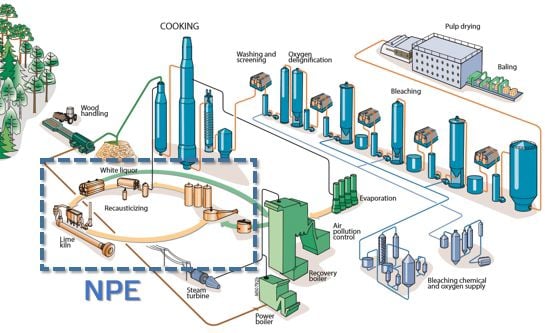The modern white liquor plant reduces the carbon footprint
Apr 10, 2018
The pulping industry has a long history and has over time been affected by different trends that have increased the complexity of the process solutions in the mills. This has given mills a multitude of conditions and requirements to adapt to, and has also created mill specific solutions. The white paper found HERE discusses and evaluates the trend of a resource efficient and clean world and its impact on white liquor plants over the world.
Within this trend we see further closure of the mills, which can lead to an increased need to purify recovery boiler ash as well as an increased focus on cleaning of green liquor. The benefit of high dregs removal through filtration is, however, countered by other trends, e.g. greater focus on power consumption and total process cost. The white paper includes an evaluation of process impact when using green liquor filtration and clarification technologies, respectively. Also, strategies to mitigate the impact of different strategies of lime cycle management are discussed.

Cleaner green liquor means easier non-process element (NPE) management.
The white paper also evaluates the possibilities to reduce the carbon footprint through substitution of oil with renewable resources such as wood residues and bark. Since bark has the added benefit of typically being a waste stream, the evaluation has focused on bark as an alternative fuel. Potential pitfalls are discussed with focus on overall lime cycle chemistry and management of non-process elements (NPE).
Summary
Summarizing the findings, it is possible to a certain extent to design systems with larger intake of NPE, but it comes at a cost. Green liquor purification using a clarifier with reasonable results (100 mg/l) rather than a filter with very good results (5 mg/l) in this case reduced active CaO with less than 1 %-unit, to compare with the use of biofuel where the reduction (in the case of reasonable quality of bark) was 9 %-units. Adding poor green liquor clarity to the use of biofuel would probably give an additive effect since the loss in active CaO due to NPE from the biofuel would in no way be affected by the green liquor clarity.
Overall, the quality of raw material is an important factor but it was seen that the lime makeup quality in particular, became crucial in cases where a larger makeup was required. The quality influenced the white liquor plant, but also the rest of the mill since part of the NPE was transferred to the white liquor.
Purge strategy was evaluated on a basic level; however, a complete evaluation would have to include more information specific to a given mill. Based on the assumptions made in this paper, purging via the lime mud filter would be most cost effective whereas purging via the kiln ESP the least cost effective. The main reason for this was the fuel cost. If a more specific evaluation were to be made, the preliminary work could include an alternative assuming a certain enrichment of P.
Finally, the use of biofuel is of great interest as a means of improving the environmental profile, but great care should be taken in ensuring that the NPE content (mainly in the biomass, but also in the lime makeup) is within reason. The evaluation was based solely on the use of bark due to its added benefit of typically being a waste stream, and it can be noted that wood does not have nearly the same level of NPE and will cause much less concern.
For more information on modifying your white liquor plant, contact your Valmet representative.